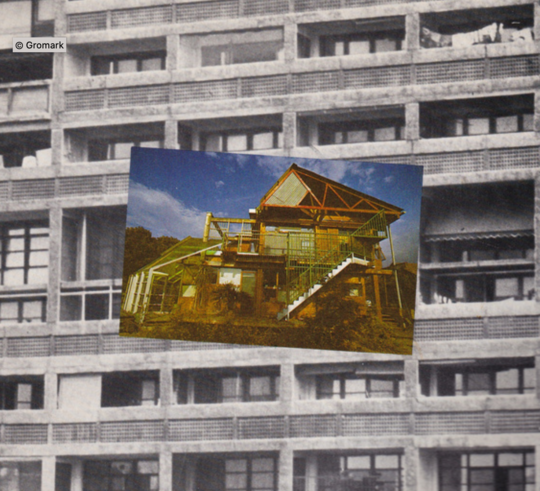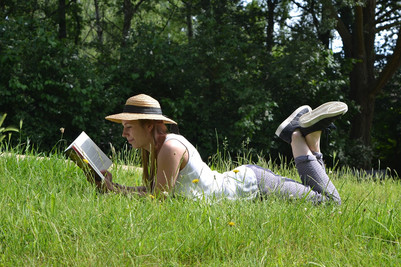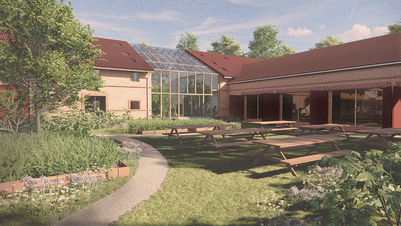
Advisory board | Sten Gromark

In Praise of ITD, Inter- and TransDisciplinarity with some other Disciplinarities. This is my story...
Sten Gromark; dr professor em Chalmers University of Technology ACE, Architecture and Civil Engineering, Göteborg, Sweden
For quite a while there has been an intensified buzz in academia around the notion of transgressive disciplinarities; of many kinds; of inter-, of cross-, multi- and even of intra-, up to the mysteries concerning the utmost prestigious form: transdiciplinarity or TD, a term normally understood as co-creative collaboration beyond academia involving business and institutional partners to achieve a substantial leap forward in terms of invention and production of knowledge.
As I have had the great opportunity to represent Sweden in an ambitious COST EU project devoted to scrutiny of these concepts by the name of Intrepid, that was recently closed after five years running of a manifold of collaborative activities, I have chosen to relate to these different disciplinarities here following my proper research itinerary and roadmap as illustrations to these abstractions. Among the foremost results of the COST project connecting members of almost all EU countries is the imminent 2021 forthcoming publication from one of the team’s work with the title Enabling the City. Inter and Transdisciplinary Encounters.[1]

My contribution to this forthcoming book is a chapter co-written together with Björn Andersson and Anna Braide. It presents a tentative assessment of the Viva residential project by Riksbyggen EF inaugurated on Chalmers campus 2019, conceived and interpreted from a TD perspective.
Our participation in the project as a team of researching architects and a social worker was related to the AIDAH Project that is also recently concluded in a text collection publication 2020 on Routledge titled Architecture for residential care and Ageing communities.[2] The AIDAH project as a whole could be considered as A multilayered cooperation between architectural residential design and caring professionals focused on EDB and the healing potentials of built environment configurations.

For me personally however, I think it all began with an early expressed ambition to take steps for academic transgression between architecture and sociology; to build new bridges between architecture design and sociologically inspired critical interpretations in particular of explorative residential situations, thus a cross-disciplinary approach. The notions of ID or TD were never or hardly explicitly evoked by that time.[3] This early adopted principle, very much following in the steps of French urban sociology and the legacy of Henri Lefebvre, resulted in a dissertation from 1983 on co-housing, alternative ways of living or the movement of residential communities, like l’habitat groupé autogéré in France. My collaboration with social science profiles dedicated to socio-spatio analysis has continued since then in particular with my longtime academic partner Katrin Paadam, professor of sociology[4] but also formerly with i.e., Michel Conan.[5]
Another cross-disciplinary advent was the collaboration between six architects and two philosophers in the shadow of by then shining but academically obscured by theatrical lights of Gilles Deleuze that resulted in a co-edited book with professor Fredrik Nilsson; Utforskande arkitektur from 2006, where we tried to formulate, in Swedish, the prospects of an architecture of exploration, where the exploration of possibilities by architectural means should be located within the progressive project in itself, open for surprising co-created cultural discoveries of many human kinds.[6] A more recent example of a cross-disciplinary venture where I have been active, this time between architecture and anthropology, will be released soon by a Nordic constellation of architects and anthropologists led by a Danish and Norwegian group of editors.[7]

The ID dimension landed later in collaboration with Nordic, European and international colleagues on the topic of new ways of residing in interdisciplinary perspectives, with interdisciplinary as a key word that even landed on the cover of a book we did together with architectural interpretations and sociological enquiries.[8] Our common approach to ID was that the residential situation of contemporary societies presents such a degree of complexity as a research and innovation field that it simply must be addressed from several different scientific and professional angels in extended intimate and creative collaboration.



Architecture in Effect
The grand experience of all kinds of academic transgressions occurred for me during the years of the national research endeavor of Architecture in Effect and Architecture in the Making – Rethinking the social in architecture that involved the four national schools of architecture and several additional university research environments in Sweden and worldwide. Two major research teams on national level were formed together with a special PhD training school with an extensive course programme. This huge research funding initiative, a special mission induced by the government to unfold a requested solid theoretical and methodological platform and on top of that to promote a singular identity to architectural research, as a respected academic field of scientific inquiry among others. It was actually also a rescue operation to ensure the continuity of research within a field of dwindling resources and scarce research activities, on the brink of disappearance and oblivion. This inward directed academic self-reflection could in my mind be regarded as introspective or rather intra-disciplinary.[9]
Extension: The Singularity of Urban Architectural Research and Practice
The reflections indicated above concerning the Viva project, considered as a major case of TD practice, serves as an illustration to what a transdisciplinary knowledge production would possibly entail, set to develop the arguments for the trans-disciplinary singularity of urban architectural research. Is it really so, what has been argued, that the unfolding of an architectural project is an advanced way of producing new societal knowledge; that architecture research or even architectural practice already really is, according to the famous formulation by Bryan Lawson, that “…perhaps we are ahead of the game?”
Or as other researchers like Doucet and Janssens note:
“Acting as a discipline (theory, history) as much as a profession (practice) and having to incorporate this plethora of disciplinary and non-disciplinary knowledge forms, architecture and urbanism, indeed, behave par nature in a trans-disciplinary fashion.”[10]
The same authors conclude that to be more precise about what defines and what singles out trans-disciplinarity in the world of architecture is the threefold hybrid combination of an integration of discipline and profession, the ethical dimension and the designerly mode of inquiry. They continue further, in their turn, to cite other colleagues, Pohl and Hirsch Hadorn from 2008, who argue that:
“…trans-disciplinary research is needed when knowledge of a societally relevant problem field is uncertain, when the concrete nature of problems is disputed, and when there is a great deal at stake for those concerned by problems and involved in dealing with them…”[11]
The dialogue process as observed in the case of Viva evolves around an object, the project, a simulacrum, as urban sociologist Michel Conan has observed, that is critical for insights provided and acquired throughout the whole process:
“Actually, the ambiguities stimulate mutual explorations and debates among members of a group after a first moment of communion of shared fascination in front of the architectural project, leading to an architecturally projected new critical re-appraisal of their life world. --- It is these deep transformations introduced and implanted by the inventor of the simulacra in the mind of the architectural subject --- it is these debates and not the form itself given to the simulacra that brings out, produces this clarifying insight.” [12]
The singularity of architecture research is very much dependent upon the often-expressed profound ambition to reach for the implementation of findings, for the ultimate material realization in the real world as critical projections. Architectural research---like science is able to explain and like art to express ---is particularly inclined to explore as a major part of a professional as well as a scientific identity profile. In contemporary discourse this salient attitude of making effects; arguing for an architecture of exploration in a trans-disciplinary context beyond academia, on the basis of inter-disciplinary collaboration and intra-disciplinary re-consolidation, is often considered as a significantly radical new way of societal knowledge production. Such an orientation and positioning is challenging the established perceptions and demarcations of the established scientific community at large. It is promoting an action-oriented operational profile of the profession, as indicated by a former publication of mine outlining actually the singularity of design research in architecture.[13]

References
Conan, Michel, Gromark, Sten, Jantzen, Erik B, & Bilsel, Cana. (1998). Architects as Actors in Redevelopment of Urban Form in Municipalities. Research directed by Michel Conan, Cstb, Preliminary illustrated report Draft IV of EuroConception Research Project Version of September 1998. Retrieved from Paris:
Doucet, Isabelle, & Janssens, Nel (Eds.). (2011). Transdisciplinary Knowledge Production in Architecture and Urbanism. Towards Hybrid Modes of Inquiry. New York: Springer USA.
Fokdal, Josefine, Ojamäe, Liis, Bina, Olivia, Chiles, Prue, & Paadam, Katrin (Eds.). (2021). Enabling the City. Inter and Transdisciplinary Encounters. London: Routledge.
Gromark, Sten. (1983). Boendegemenskap. En kritisk granskning av dess värden, villkor och förutsättningar samt exempel på praktisk tillämpning i ett västeuropeiskt sammanhang. [diss. Chalmers Arkitektur-Byggnadsplanering ByACTH 1983:2]. Chalmers Arkitektur, Göteborg.
Gromark, Sten. (2000). The Singularity of Architectural Research. In Anneloes Nieuwenhuis & Marieke van Ouwerkerk (Eds.), Research by Design Conference Book. Delft: Faculty of Architecture, Delft University of Technology.
Gromark, Sten, & Andersson, Björn (Eds.). (2020). Architecture for Residential Care and Ageing Communities: Spaces for Dwelling and Healthcare. New York: Routledge NY USA.
Gromark, Sten, Andersson, Björn, & Braide, Anna. (2021). Explorations on Residential Resilience—brf Viva 2011-2019 [COST Intrepid publication]. In Josefine Fokdal, Liis Ojamäe, Olivia Bina, Prue Chiles, & Katrin Paadam (Eds.), Enabling the City. Inter and Transdisciplinary Encounters. (pp. 90-110). London: Routledge.
Gromark, Sten, & Conan, Michel. (1999). Learning from Karlskrona : Beyond Convention and Invention. In Sten Gromark, Timo Tanninen, & Ivor Ambrose (Eds.), Resurgence and transcendence : Assessing social consequences of the implementation of housing policies & renewal policies in Europe Proceedings from CIB W69 meeting in Göteborg june 4-8 1998. Göteborg, CIB W69/Chalmers School of Architecture.
Gromark, Sten, Hagen, Aina Landsverk, & Stender, Marie. (2021 forthc.). Urban space and public life - intro part 2. In Marie Stender, Claus Bech Danielsen, & Aina Landsverk Hagen (Eds.), Architectural Anthropology: Exploring Lived Space. London: Routledge.
Gromark, Sten, Ilmonen, Mervi, Paadam, Katrin, & Støa, Eli (Eds.). (2016). Ways of residing in transformation - Interdisciplinary perspectives. London: Ashgate/Routledge.
Gromark, Sten, Mack, Jennifer, & Toorn, Roemer van (Eds.). (2019). Architecture in Effect Vol #1 (2) : Rethinking the Social in Architecture – Making Effects. Barcelona & New York: Actar.
Gromark, Sten, & Nilsson, Fredrik (Eds.). (2006). Utforskande arkitektur - situationer i nutida arkitektur [Eng. Exploring architecture - Situations of Contemporary Architecture]. Stockholm: axl books.
Paadam, Katrin, & Gromark, Sten. (2019). Voices from the Inside: Residents’ Experiences in the Bois-le-Prêtre Alteration Project, Paris, 2013. In Sten Gromark, Jennifer Mack, & Roemer van Toorn (Eds.), Architecture in Effect Vol #1(2) : Rethinking the Social in Architecture - Making Effects. (pp. 213-231). Barcelona & New York: Actar.
Pohl, C, & Hirsch Hadorn, G. (2008). Core terms in transdisciplinary research. In G Hirsch Hadorn (Ed.), Handbook of transdisciplinary research. (pp. 427-432). Heidelberg: Springer.
[1] (Fokdal, Ojamäe, Bina, Chiles, & Paadam, 2021; Gromark, Andersson, & Braide, 2021)
[2] (Gromark & Andersson, 2020)
[3] (Gromark, 1983)
[4] (Paadam & Gromark, 2019)
[5] (Gromark & Conan, 1999)
[6] (Gromark & Nilsson, 2006)
[7] (Gromark, Hagen, & Stender, 2021 forthc.)
[8] (Gromark, Ilmonen, Paadam, & Støa, 2016)
[9] (Gromark, Mack, & Toorn, 2019)
[10] (Doucet & Janssens, 2011, pp. 2-3)
[11] (Pohl & Hirsch Hadorn, 2008)
[12] (Conan, Gromark, Jantzen, & Bilsel, 1998)
[13] (Gromark, 2000)

Sten Gromark; dr professor em Chalmers University of Technology ACE, Architecture and Civil Engineering, Göteborg, Sweden
Sten Gromark is part of the Spaces of Danish Wefare advisory board.















